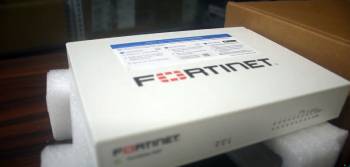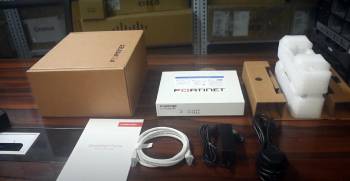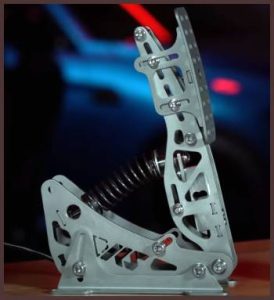When it comes to network security, choosing the right hardware is a critical decision. Fortinet, a leading provider of network security appliances, offers a diverse range of products to cater to various needs.
Today, we’ll delve into the differences, pros, and cons of two popular models in their product lineup: the Fortigate 60F and the Fortigate 80F. By the end of this article, you’ll have a clear understanding of which model is best suited for your business’s requirements.
A Brief Comparison Table
| Feature | Fortigate 60F | Fortigate 80F |
| Firewall Throughput | 10 Gbps | 20 Gbps |
| VPN Performance | 1 Gbps | 2.5 Gbps |
| Network Interfaces | 10 x GE RJ45 ports | 14 x GE RJ45 ports |
| Form Factor | Compact/Desktop | Rackmountable |
| Security Processor | SOC4 | SOC4 |
| Security Fabric Integration | Yes | Yes |
| Sandbox Integration | No | Yes |
| IoT Device Identification | No | Yes |
| Price | Lower | Higher |
A Tale of Two Firewalls: Fortigate 60F and 80F
The Fortigate 60F and 80F models are part of Fortinet’s next-generation firewall (NGFW) solutions, aimed at providing robust network security to small and medium-sized businesses.
Although they share some similarities, the two models cater to different use cases and offer unique advantages. Let’s explore these similarities and differences in depth.
The Similarities
Both the Fortigate 60F and 80F are designed to deliver high-performance threat protection and security services. They come equipped with the latest SOC4 security processors for optimized performance, and support Fortinet’s Security Fabric for enhanced visibility and control across the entire network.
The Differences
While both models share some features, there are key differences that set them apart:
- Performance
The Fortigate 80F boasts a higher firewall throughput and VPN performance compared to the 60F, making it a more suitable choice for businesses with higher bandwidth requirements.
- Port Density
The 80F model comes with more network interfaces, providing greater flexibility and scalability for growing businesses.
- Price
As expected, the Fortigate 80F comes at a higher price point than the 60F, which might be a deciding factor for budget-conscious businesses.
Now that we have a basic understanding of these two models, let’s dive into the pros and cons of each, so you can make an informed decision.
The Pros and Cons: Fortigate 60F

Pros
- Affordability
The Fortigate 60F is the more affordable option, making it an attractive choice for small businesses or those with limited budgets.
- Compact Size
With its smaller form factor, the 60F is an ideal choice for businesses with limited rack space or those looking for a desktop firewall solution.
- Ease of Deployment
The Fortigate 60F is designed for easy deployment and configuration, making it a great choice for businesses without a dedicated IT team.
Cons
- Limited Performance
While the 60F offers adequate performance for small businesses, it may struggle to keep up with the demands of larger networks or those with high bandwidth requirements.
- Fewer Interfaces
The Fortigate 60F has fewer network interfaces than the 80F, which may limit its scalability for growing businesses.
The Pros and Cons: Fortigate 80F

Pros
- Higher Performance
The Fortigate 80F delivers superior firewall throughput and VPN performance, making it an excellent choice for businesses with high bandwidth requirements or larger networks.
- More Interfaces
The 80F model comes with more network interfaces, offering greater flexibility and scalability for expanding businesses.
- Enhanced Security Features
The Fortigate 80F includes additional security features, such as sandbox integration and IoT device identification, providing a more comprehensive security solution.
Cons
- Higher Price
The 80F comes at a higher price point than the 60F, which may be a deterrent for budget-conscious businesses.
- Larger Form Factor
The Fortigate 80F is larger than the 60F, which may pose a challenge for businesses with limited rack space or those seeking a desktop firewall solution.
The Verdict: Which One Should You Choose?
Choosing between the Fortigate 60F and 80F ultimately depends on your specific business needs, budget, and network requirements.
The 60F is an excellent choice for small businesses or those with limited budgets, while the 80F offers superior performance and scalability for larger networks or businesses with high bandwidth demands.
To make the best decision, consider the following factors:
- Network Size and Bandwidth Requirements
Assess your current and future network size, as well as your bandwidth requirements.
If you foresee significant growth in the near future or have high bandwidth demands, the 80F may be the better choice.
- Budget
Determine your budget for network security hardware. If cost is a major concern, the 60F may be the more feasible option.
- Physical Space
Consider the available space in your server room or office for the firewall appliance.
If you have limited space or prefer a desktop solution, the 60F may be more suitable.
- IT Support
Evaluate your IT support capabilities. If you lack a dedicated IT team, the ease of deployment and configuration offered by the 60F may be an important factor.
Frequently Asked Questions (FAQs)
Yes, you can upgrade from the Fortigate 60F to the 80F. However, you will need to purchase the 80F separately and configure it according to your network requirements. Fortinet offers a wide range of support services to assist with the upgrade process.
Yes, both the Fortigate 60F and 80F are designed to support remote work environments, offering features such as VPN connectivity, secure access, and advanced threat protection.
Fortinet recommends updating the firmware on your Fortigate appliance regularly to ensure optimal performance and security. Firmware updates typically include new features, bug fixes, and security enhancements. It is advisable to monitor Fortinet’s release notes and update your firmware accordingly.
Yes, both the Fortigate 60F and 80F can integrate with other security products in your network through Fortinet’s Security Fabric, which offers centralized visibility and control across your entire security infrastructure.
To determine the right Fortigate model for your business, consider factors such as network size, bandwidth requirements, budget, physical space, and IT support capabilities.
You may also consult with Fortinet’s sales team or a Fortinet partner to receive expert guidance on selecting the appropriate model for your needs.
Conclusion
The Fortigate 60F and 80F are both excellent choices for small and medium-sized businesses seeking a robust and reliable network security solution. The right choice for your organization depends on factors such as network size, bandwidth requirements, budget, physical space, and IT support capabilities.
The Fortigate 60F is ideal for small businesses or those with limited budgets, offering a compact form factor and ease of deployment. On the other hand, the Fortigate 80F is better suited for larger networks or businesses with high bandwidth demands, providing superior performance, greater scalability, and enhanced security features.
By considering the features and pros and cons of each model, along with your organization’s unique requirements, you can make an informed decision to ensure the best possible network security for your business.



